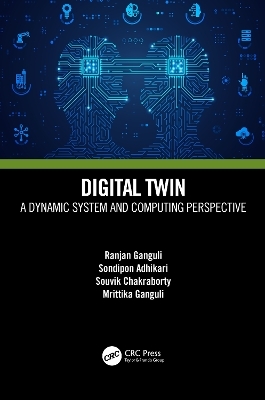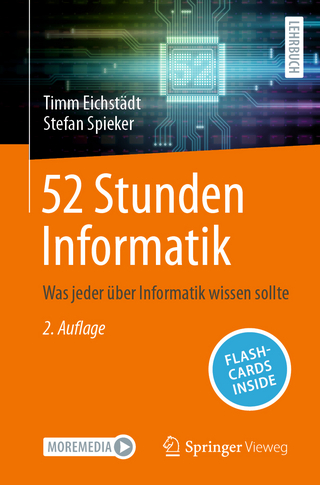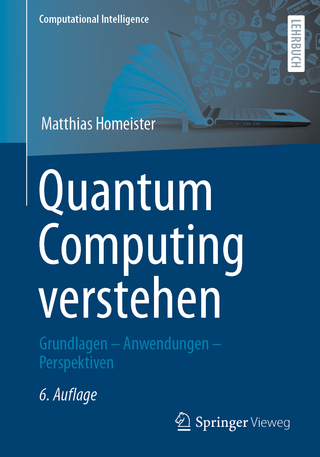
Digital Twin
A Dynamic System and Computing Perspective
Seiten
2024
CRC Press (Verlag)
978-1-032-21363-7 (ISBN)
CRC Press (Verlag)
978-1-032-21363-7 (ISBN)
- Lieferbar (Termin unbekannt)
- Versandkostenfrei innerhalb Deutschlands
- Auch auf Rechnung
- Verfügbarkeit in der Filiale vor Ort prüfen
- Artikel merken
This book introduces the computing, mathematical and engineering background to understand and develop the concept of the digital twin. It provides background in modeling/simulation, computing technology, sensor/actuators, and so forth, needed to develop the next generation of digital twins.
The digital twin of a physical system is an adaptive computer analog which exists in the cloud and adapts to changes in the physical system dynamically. This book introduces the computing, mathematical, and engineering background to understand and develop the concept of the digital twin. It provides background in modeling/simulation, computing technology, sensor/actuators, and so forth, needed to develop the next generation of digital twins. Concepts on cloud computing, big data, IoT, wireless communications, high-performance computing, and blockchain are also discussed.
Features:
Provides background material needed to understand digital twin technology
Presents computational facet of digital twin
Includes physics-based and surrogate model representations
Addresses the problem of uncertainty in measurements and modeling
Discusses practical case studies of implementation of digital twins, addressing additive manufacturing, server farms, predictive maintenance, and smart cities
This book is aimed at graduate students and researchers in Electrical, Mechanical, Computer, and Production Engineering.
The digital twin of a physical system is an adaptive computer analog which exists in the cloud and adapts to changes in the physical system dynamically. This book introduces the computing, mathematical, and engineering background to understand and develop the concept of the digital twin. It provides background in modeling/simulation, computing technology, sensor/actuators, and so forth, needed to develop the next generation of digital twins. Concepts on cloud computing, big data, IoT, wireless communications, high-performance computing, and blockchain are also discussed.
Features:
Provides background material needed to understand digital twin technology
Presents computational facet of digital twin
Includes physics-based and surrogate model representations
Addresses the problem of uncertainty in measurements and modeling
Discusses practical case studies of implementation of digital twins, addressing additive manufacturing, server farms, predictive maintenance, and smart cities
This book is aimed at graduate students and researchers in Electrical, Mechanical, Computer, and Production Engineering.
Ranjan Ganguli, Mrittika Ganguli
1. Introduction and Background. 2. Computing and Digital Twin. 3. Dynamic Systems. 4. Stochastic Analysis. 5. Digital Twin of Dynamic Systems. 6. Machine learning and Surrogate Models. 7. Surrogate based digital twin of dynamic system. 8. Digital Twin at Multiple Time Scales. 9. Digital twin of nonlinear MDOF systems.
| Erscheinungsdatum | 16.10.2024 |
|---|---|
| Zusatzinfo | 5 Tables, black and white; 76 Line drawings, black and white; 2 Halftones, black and white; 78 Illustrations, black and white |
| Verlagsort | London |
| Sprache | englisch |
| Maße | 156 x 234 mm |
| Themenwelt | Mathematik / Informatik ► Informatik ► Theorie / Studium |
| ISBN-10 | 1-032-21363-9 / 1032213639 |
| ISBN-13 | 978-1-032-21363-7 / 9781032213637 |
| Zustand | Neuware |
| Haben Sie eine Frage zum Produkt? |
Mehr entdecken
aus dem Bereich
aus dem Bereich
was jeder über Informatik wissen sollte
Buch | Softcover (2024)
Springer Vieweg (Verlag)
37,99 €
Grundlagen – Anwendungen – Perspektiven
Buch | Softcover (2022)
Springer Vieweg (Verlag)
34,99 €
Eine Einführung in die Systemtheorie
Buch | Softcover (2022)
UTB (Verlag)
25,00 €


